SCHOCH TILE
LAMINATE
Practical Beauty
Laminate By Schoch
Click Each Section For More Details
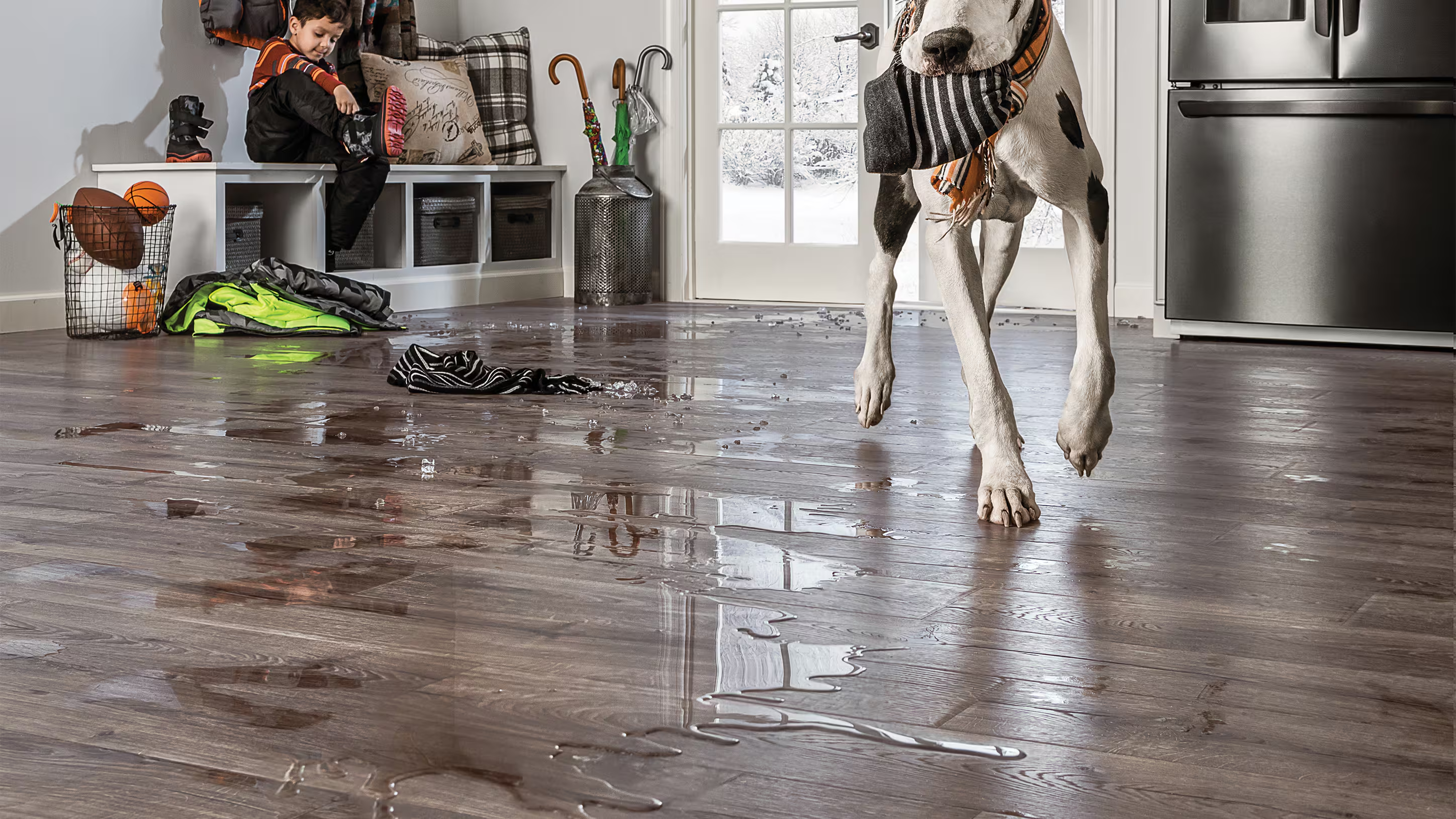
WE WANT YOU TO KNOW ALL ABOUT THE WORLD OF LAMINATE FLOORING.
Laminate flooring is a great choice for many homeowners. There are many good reasons why laminate flooring is a popular choice in today’s homes. Laminate is a manufactured product that simulates the look of hardwood, tile, stone, and many other types of flooring. In the past, laminate floors have been easy to spot, but today’s technology allows manufacturers to create realistic visuals and textures for an elegant and quality floor. We think you will be amazed at how beautifully laminate flooring resembles other premium flooring. Laminate floors are well-suited for those shoppers who want the look and feel of real hardwood or stone, but without the cost or maintenance that is associated with natural products.
Laminate floors function well in any space. You can choose from natural colors and wood grains and there are color tones to compliment any room decor in your home. Many hardwood plank designs are offered, including rare and exotic wood species. Laminate stone and tile patterns will give you the elegant look of tile but without the concerns of grout cleaning or cracking tile. And if your household is a busy one, a durable, low-maintenance product like laminate flooring is a great choice for your active lifestyle.
Because laminate flooring is stain resistant, it doesn’t need to be varnished or waxed. Laminate floors are also less likely to fade in direct sunlight, unlike aging hardwood floors. Since its resin-filled wearlayer is so dense, it becomes extremely difficult to stain or scratch laminate floors. This type of flooring can also be installed over a wide variety of subfloors, including wood, existing subfloors, and even concrete slabs.
We invite you to investigate more to learn if durable, versatile, and cost-efficient laminate flooring is the answer for your home.
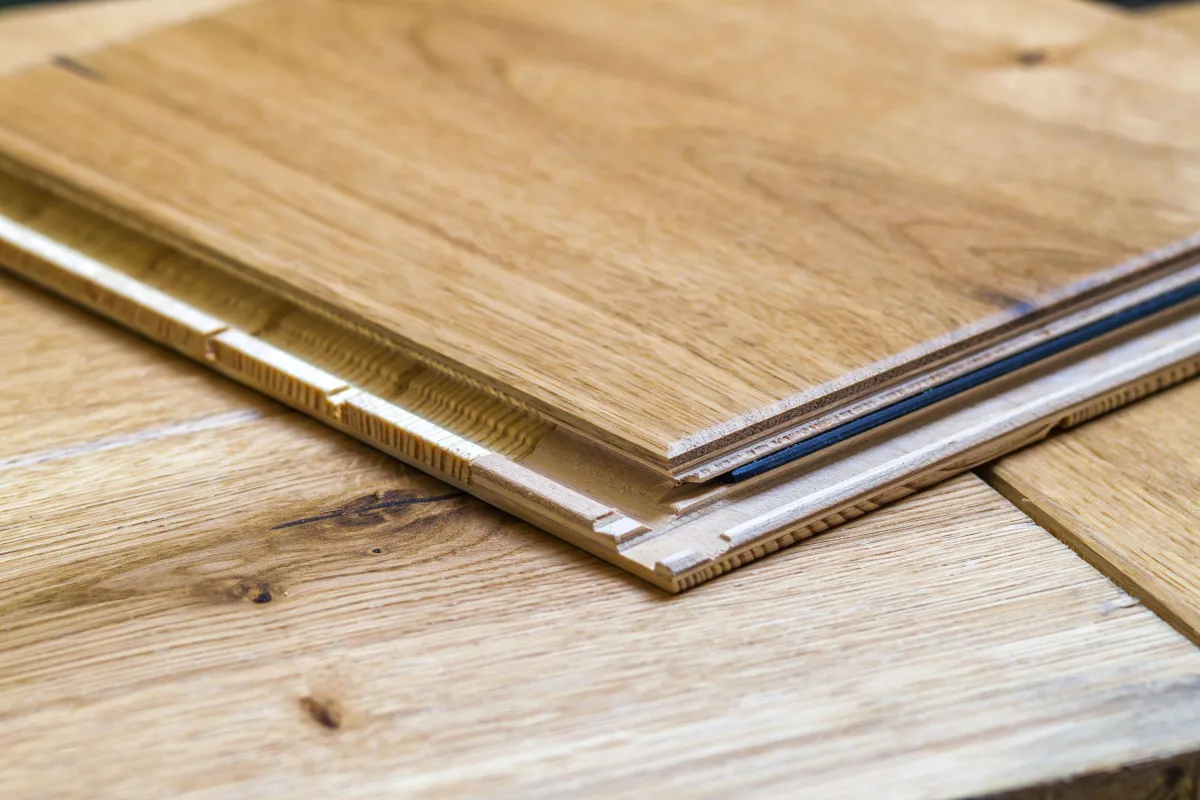
LEARN THE BASICS OF HOW LAMINATE IS MANUFACTURED
Knowing how laminate is constructed helps you to better understand and evaluate its performance aspects. We will do our best to help you learn how laminate is made and the reasons why certain processes are performed.
Laminate flooring consists of four main components that are bonded together. The bottom layer, or backing, is a melamine plastic layer that lends dimensional stability to the planks and also helps guard against moisture from the subfloor. The next layer is a core board, generally made from high-density fiber board or particle board, which may also contain melamine plastic resin to help improve the moisture resistance of the core. Then a decorative layer or print film is adhered to the top of the core board, giving the floor its hardwood or tile look. This decorative layer is a printed, high-resolution, photo reproduction of wood grain, stone, or ceramic tile pattern. The top is a durable wearlayer, providing protection and stain resistance.
Then all four layers are put through high pressure to bond them together. The stacks of layers are pressed at high temperatures and pressure. After the sheets are pressed, they are left to cool to ensure that they fully cure and to prevent any surface imperfections. These sheets are stacked and stored for a time, so that they can continue to acclimate, thereby enhancing the stability of the boards.
Once the boards are fully acclimated, they are milled, or cut into planks. The freshly cut planks are then profiled. Multiple profiling saws create the tongue and groove edges on the sides of the planks to enable the floor to lock together with ease.
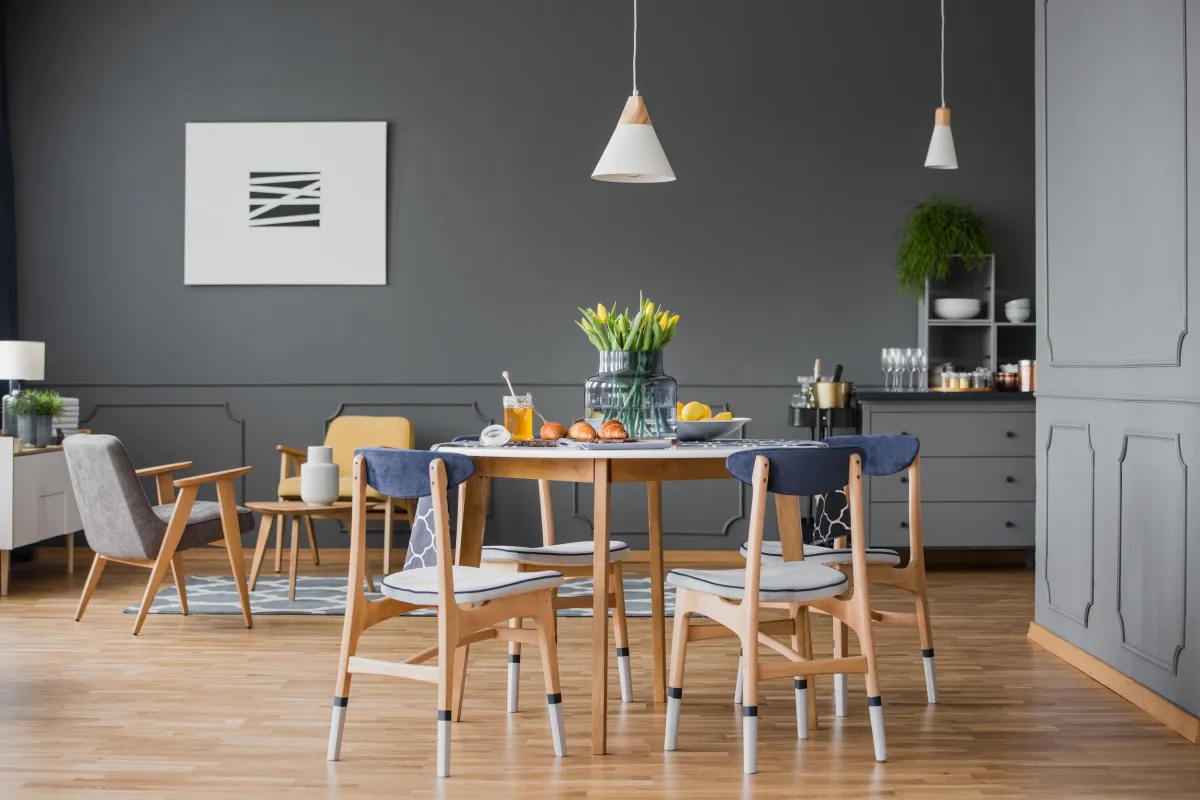
LAMINATE OFFERS YOU MANY STYLES FOR YOUR HOME.
Because of the growing popularity of laminates, manufacturers are creating an increasing array of traditional, rustic, and exotic wood grain and stone designs. In fact, presses have improved to the point where the texture imprinted on top of the design looks more real than ever, even with distressed wood or natural stone designs.
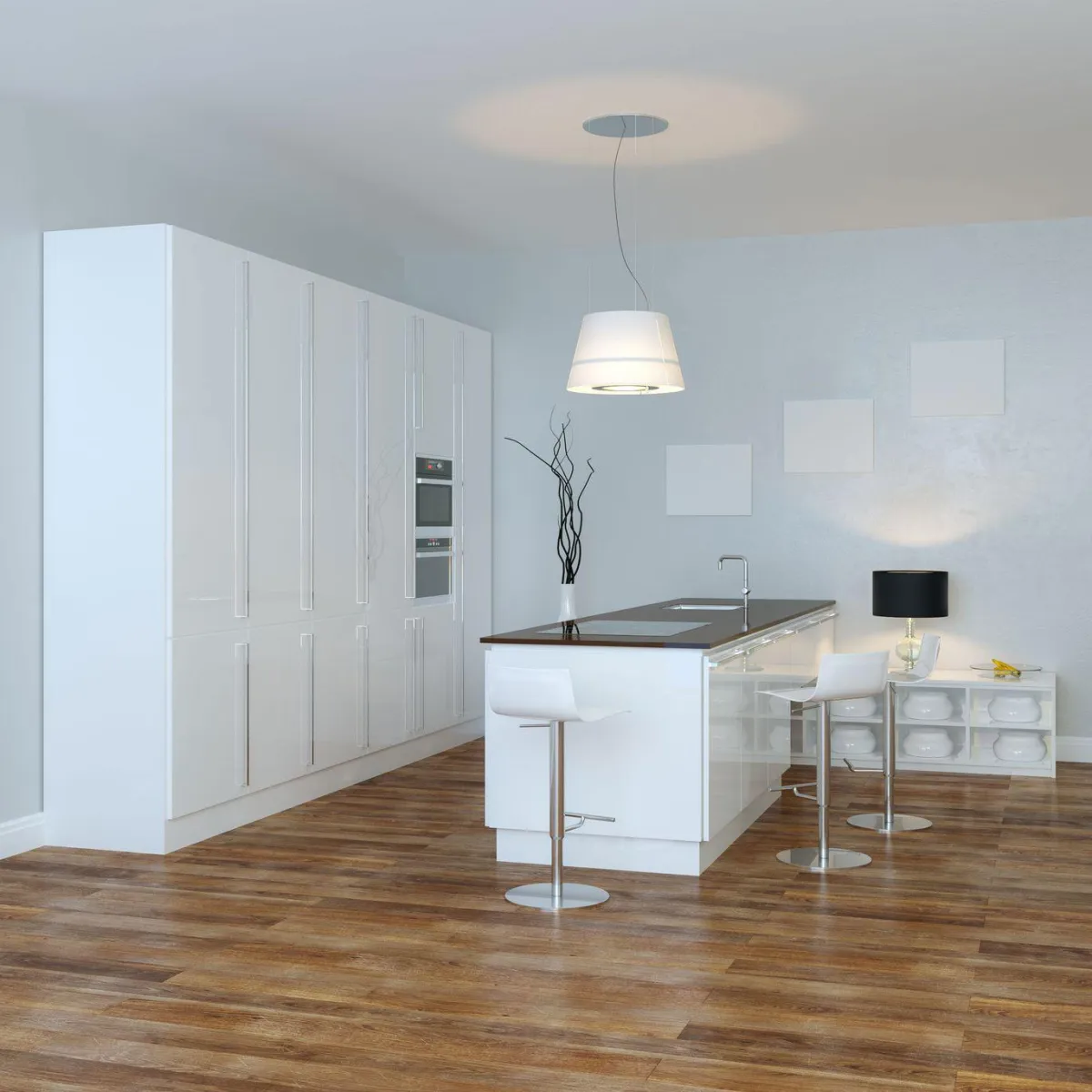
THERE ARE FOUR TYPES OF LAMINATE FLOORING
The first is glueless laminate. No mess, glueless installation makes these floors quick and easy to install. They come in a variety of ceramic and wood designs and colorations, as well as some are offered in a real, hardwood veneer, instead of a printed layer. These floors come in both planks and squares. A thin plastic underlayment is needed to seal out moisture from below. This also helps the floor float freely over the subfloor.
The second is laminate flooring with attached underlay. These floors come with several different types of tongue and groove locking systems and an attached underlayment to reduce noise levels.
Glued laminate floors are the original laminate floors that do require a specially formulated glue to be applied to the tongue and groove areas for each plank. Once the flue is dried, the planks are almost impossible to pull apart. These floors are offered in both planks and squares.
Laminate moldings also affect the overall style and give your room a beautiful finished look. Moldings are important because they cover the space that is allowed for the flooring to expand and move naturally on top of the subfloor and they help with the transition to an adjacent floor. Most manufacturers offer coordinating moldings for all styles and colors for any laminate flooring you choose.
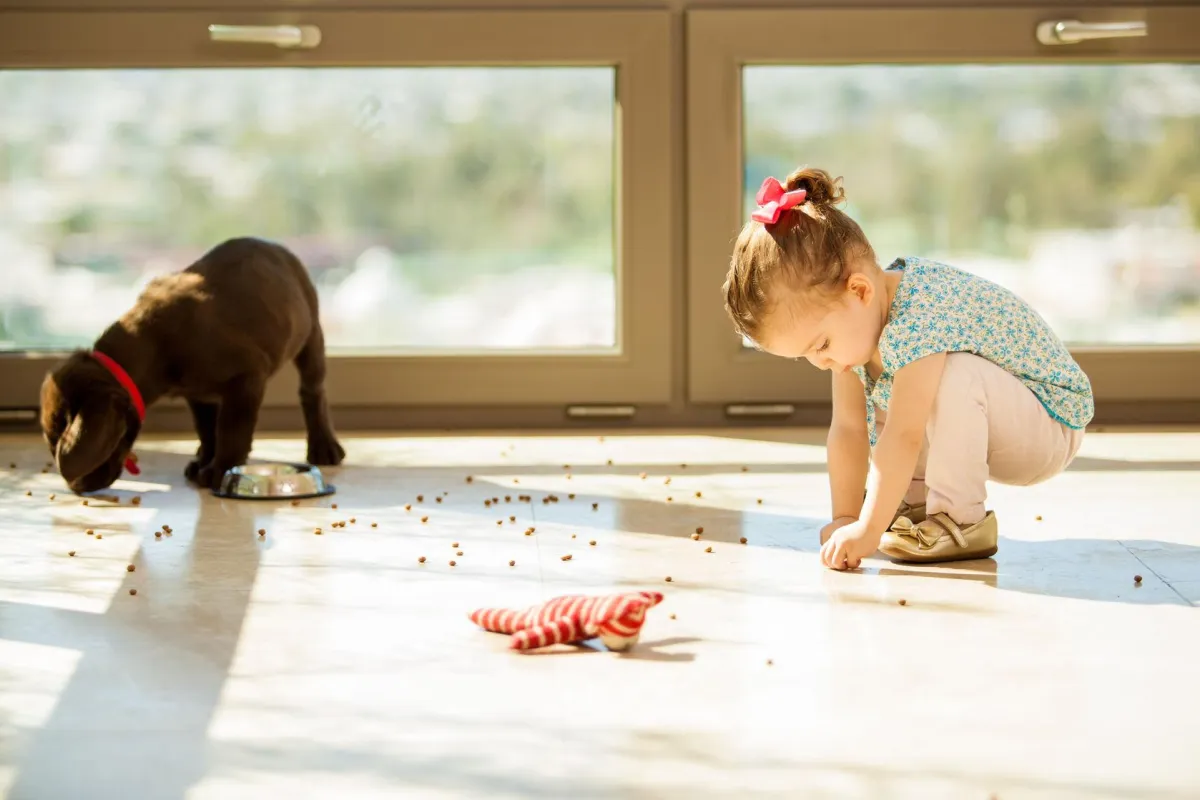
THIS FLOORING STANDS UP AND STANDS OUT
Laminate flooring is a remarkably durable surface that is stain resistant and does not need to be varnished or waxed. This makes it very easy to maintain. These are floors for busy households, especially homes with kids and pets.
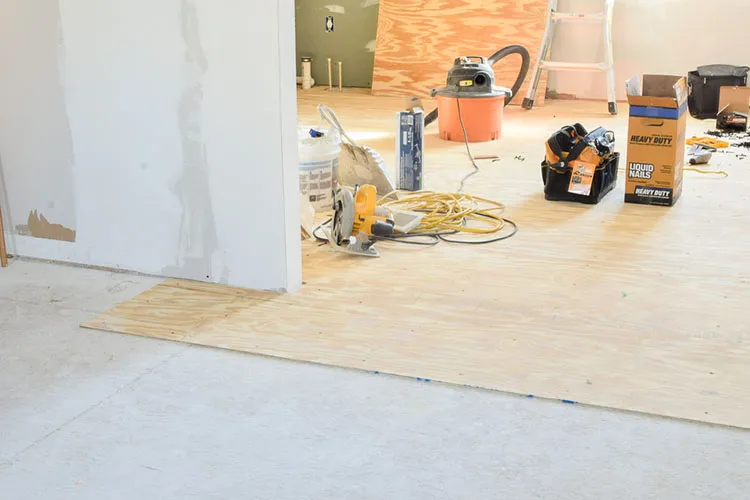
WE OFFER TWO WORDS OF ADVICE: BE PREPARED
Being prepared and involved will help ensure that the process is done smoothly and efficiently. Knowing what to expect will also be a lot less stressful on you, your family, and your home. Get ready for the day that your new laminate flooring will arrive. Your understanding of the basics of installation will increase your knowledge of the process and enhance your confidence in the professionals working in your home.
Remove all furniture and other objects from the areas where the installation will take place. If you are removing your current floor covering, do it at least one day prior to the arrival of your hardwood product to allow for cleanup and floor preparation. If removing old carpet, please leave tack strips in place and pull out the staples from the floor. In many cases, moldings and baseboards need to be removed for the laminate installation.
Your existing subfloor may need to be prepared to receive the laminate flooring or a new subfloor may be required. It is important that the subfloor be as clean and level as possible. All laminate products need to be acclimated to the new environment for at least four to five days prior to installation. The area of installation must be climate controlled and indoor humidity should be maintained between 45-65%.
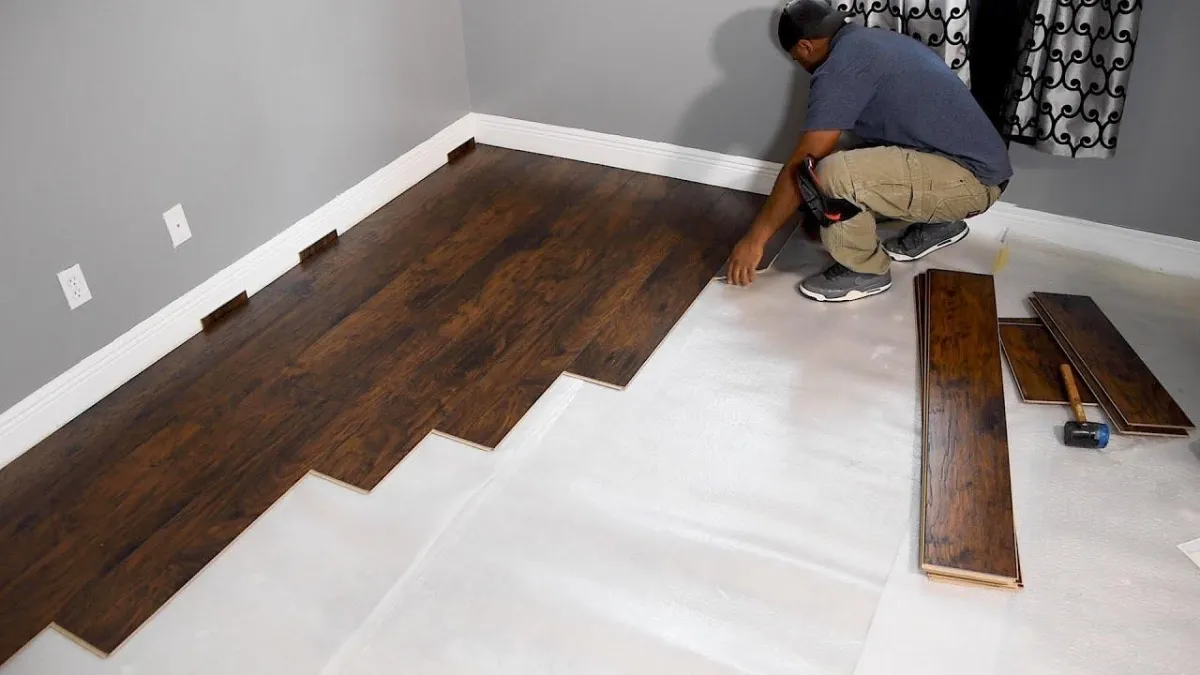
WHAT TO EXPECT DURING INSTALLATION
Plan to be home on installation day. Be prepared to be available in case the installers have questions. Your installers will use a variety of tools that can make the work area hazardous. Please be sure that children and pets are kept out of the area on installation day.
When laminate flooring is installed, there is always the possibility that the doors may not clear the new floor and swing freely. Some installers will remove doors in order to install the laminate and rehang them. You may need to arrange for a carpenter to shave or cut down doors to ensure clearance.
Prior to the completion of the installation, do a walk-through with the chief installer. This will give you the opportunity to ask questions and to be clear on any final details.
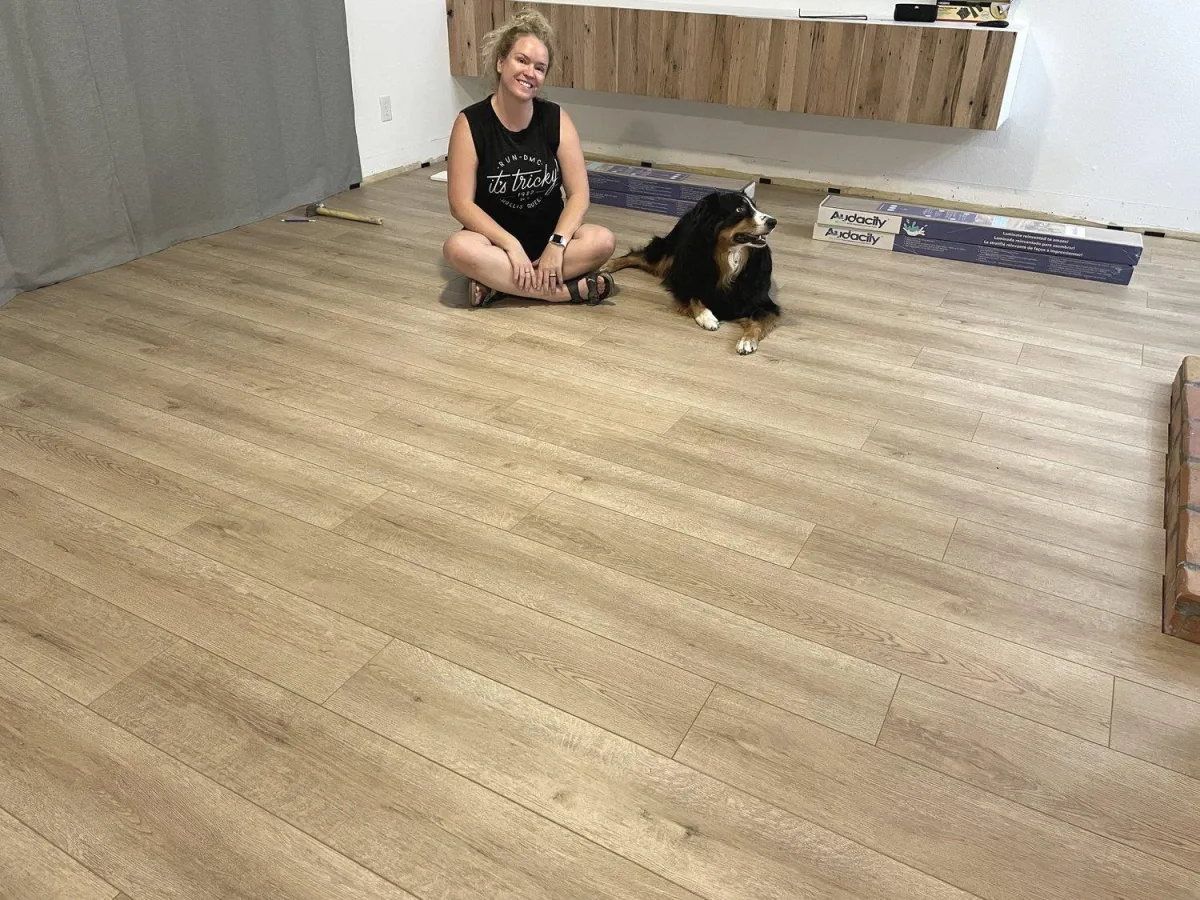
WHAT TO DO AFTER INSTALLATION DAY
Good ventilation should be established for 48-72 hours after installation. Usually, the waste materials are collected by your installer and left at your trash collections site but check with us, so you are clear about the cleanup. Painted baseboards, woodwork, and paint may need retouching after the installation is complete. If necessary, this is your responsibility.
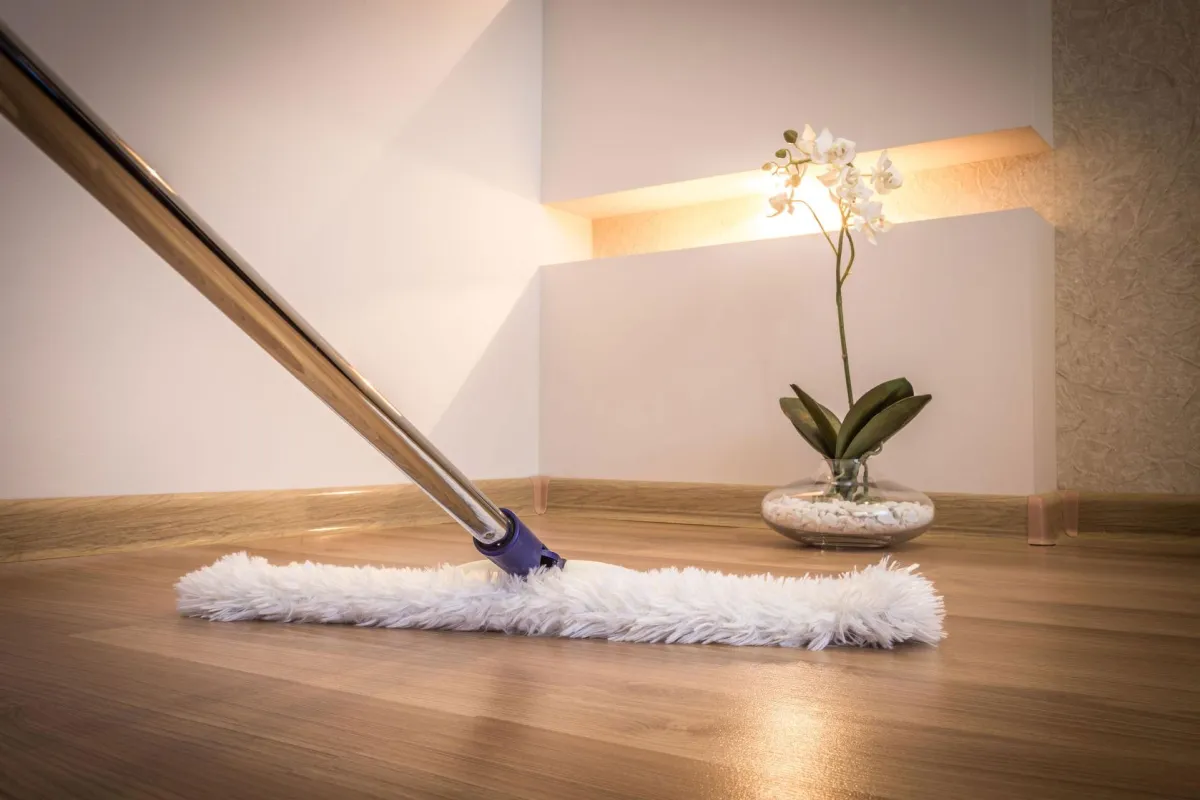
KNOWLEDGE ABOUT LAMINATE UPKEEP
ou need to know the best practices for taking care of your new laminate flooring so you will be better able to keep it in its beautiful, inviting, and valuable original conditions. Also, knowing what is expected of you regarding upkeep can be a determining factor in your purchase choice.
Acclimation
The adaptation of the laminate floor to its installation environment.
Backing
In laminate flooring, the bottom layer, or backing, is a melamine plastic layer that lends dimensional stability to the planks and also helps guard against moisture from the sub-floor.
Decorative Layer
In laminate flooring, a decorative layer or print film is adhered on top of the core board giving the floor its hardwood or tile look. This decorative layer is a printed, high-resolution photo-reproduction of wood grain, natural stone or ceramic tile pattern.
End Molding/Carpet Reducer
Used as a transition from laminate floors to different flooring surfaces when the reducer does not allow enough height, such as on high-pile carpet or thick ceramic tile.
Floating Floor System
Laminate floors are installed using a “floating floor system” in which a padded underlayment sits between the subfloor and the laminate planks. The planks sit directly on the underlayment and are not anchored to the sublfoor on the bottom but rather are anchored on the edges.
Glued Laminate Flooring
These are the original laminate floors that do require a special formulated glue to be applied to the tongue and grooved areas for each plank. Once the glue is dried the planks are almost impossible to pull apart. These floors are offered in both planks and squares.
Glueless Laminate Flooring
A no mess installation method where the planks or squares simply interlock together.
Laminate
Is a manufactured product that simulates the look of hardwood, ceramic tile, natural stone and many other types of flooring.
Melamine Resin
Used to help improve the moisture resistance and durability of the core board of laminate flooring.
Moldings
Trim pieces that cover the space that is allowed for the flooring to expand and move naturally on top of the subfloor. They also help with the transition to an adjacent floor. Moldings for laminate floors are slightly larger than their wood or ceramic tile counterparts.
Overlapping Stair Nosing
Similar to a flush stair nosing except the nosing overlaps the exposed edge of your floor. The overlapping stair nosing is secured to the sub floor and not to the laminate floor so the floor is free to move
Peaking
Seams that have raised where the laminate planks or tiles join.
Plank
A laminate floor panel that is typically 5 or 6 inches longer than wide.
Pre-Glued Laminate Flooring
A no mess method of installation because the glue is already applied to the tongue and grooves. A thin, plastic underlayment is needed to seal out moisture and prevent the glue from sticking to the substrate.
Quarter Round Trim
Installed wherever the laminate floor meets the wall or baseboard.
Reducer Strip
The transitional piece installers use to connect the laminate with another type of floor covering such as vinyl, thin ceramic tile, or low-pile carpeting.
Screens
The quality of the laminate partially has to do with the photography and the number of photographs per style, which is known as "screens". The more screens a product has, the more variation it can offer. And the more “authentic” the laminate looks.
Seams
The junction where the panels connect together.
Square Nosing / Universal Edge
Used where the laminate flooring butts up to carpeting, or various vertical surfaces where the edge will be exposed, such as along a fireplace.
Step Down Stair Nose
A coordinating molding piece providing the proper transition for all the steps in a home.
Tile
A laminate panel in a geometric shape – square.
T-Molding
Commonly used in doorways to join two laminate floors in adjoining rooms. It's also recommended when making transitions from a laminate floor to another floor that is approximately the same height.
Underlayment
A material used between the laminate flooring and the subfloor that acts as a sound and moisture barrier and also allows the floor to expand and contract with changes in the temperature.
Wear Layer
The durable, top layer of laminate flooring. It provides protection and stain resistance. Many wear layers also contain aluminum oxide, as well as melamine resin, and that creates exceptional durability.
About Us
Transform Your Space with Top-Quality Craftsmanship
Contact Us
5282 Crookshank Rd, Cincinnati OH 45238
Phone (513) 922-3466
Copyright© 2025 Schoch Tile - All Rights Reserved.
